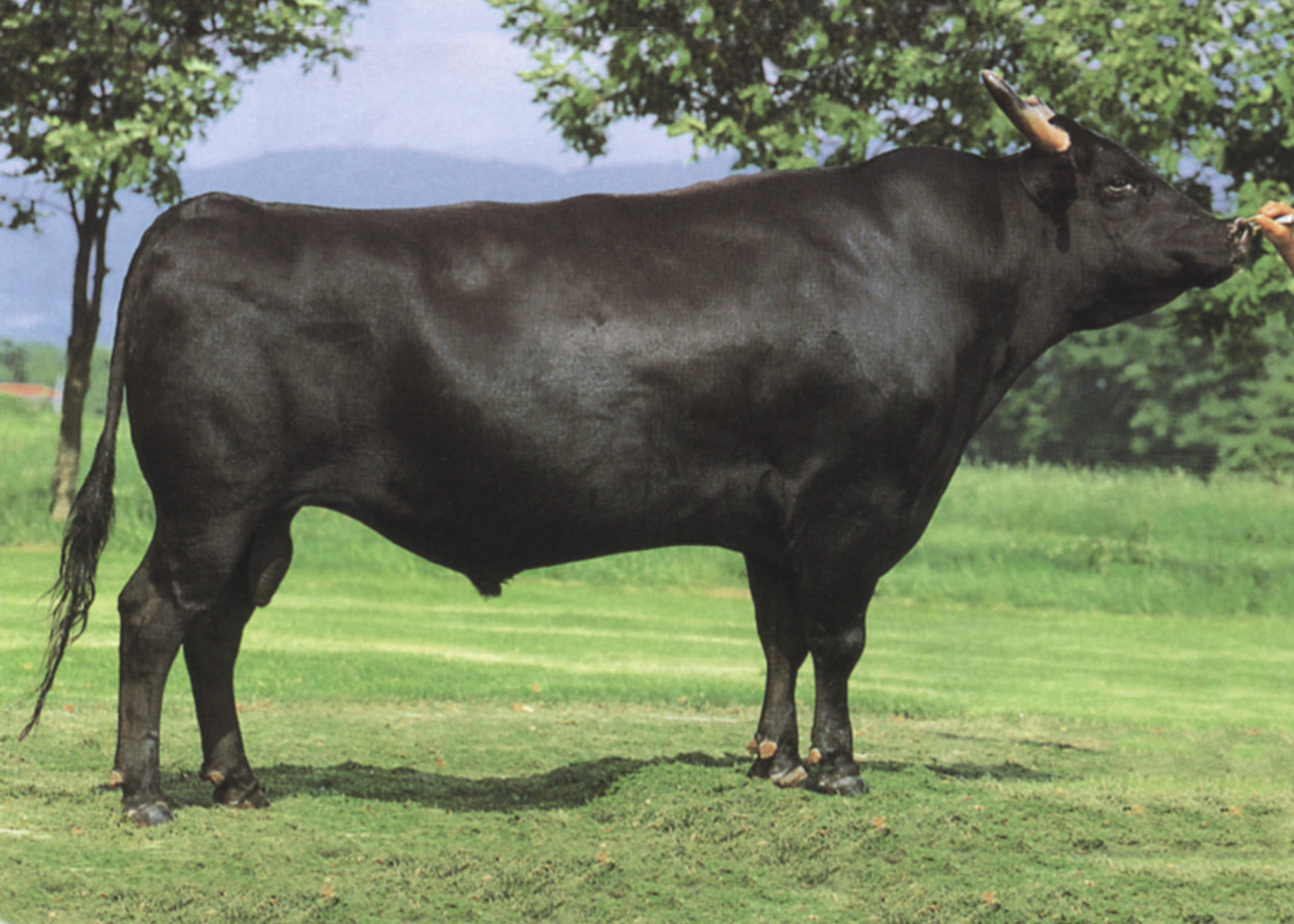
The Outstanding Wagyu of Japan
 Renowned Japanese researcher Kenichi Ono has written a definitive series of books roughly translated as “100 Greatest Wagyu in Japan.”* I first hunted down his authoritative books during my visit to Japan’s 9th Zenkyo** in 2007. Ono has now published four volumes covering many of the most well known and highly regarded Wagyu cattle, both sires and dams. Volume 1 was published in 1999; Volume 2 in 2001; Volume 3 in 2007; and Volume 4 in 2012, which I was fortunate to find on my visit to the 10th Zenkyo held in Sasebo-Nagasaki in 2012.
Renowned Japanese researcher Kenichi Ono has written a definitive series of books roughly translated as “100 Greatest Wagyu in Japan.”* I first hunted down his authoritative books during my visit to Japan’s 9th Zenkyo** in 2007. Ono has now published four volumes covering many of the most well known and highly regarded Wagyu cattle, both sires and dams. Volume 1 was published in 1999; Volume 2 in 2001; Volume 3 in 2007; and Volume 4 in 2012, which I was fortunate to find on my visit to the 10th Zenkyo held in Sasebo-Nagasaki in 2012.
The books represent a valuable resource for all Wagyu breeders all over the globe not only for its brilliant writing and scholarly, investigative research, but also for its invaluable insights regarding the breeding of these special beasts. The intention of this article is to raise awareness of Ono’s work – work that we think will be beneficial for all Wagyu breeders. It should be noted that most of the genetic lines considered in these volumes are available not only in Japan, but now worldwide.
Over the course of the following weeks and months, we will investigate and analyze Ono’s detailed descriptions of the major Wagyu influences in all four volumes. Because it is our commitment to preserve and enhance the integrity of the Wagyu breed in America, we will share our findings with you in a series of posts on our blog and e-newsletters.
Revered for its astounding beef and regarded as a National Treasure of Japan, Wagyu has been ushered to this supreme standing in the world by the craft and toil of the Japanese farmer – and they should be valued for their great contribution to the breed.
In Volume 1 there are 15 Wagyu highlighted as the 15 most important in the modern history of the breed – both females and males are listed – and of interest is that 10 of them have passed on genetics that are available today to the Western producer. Many of us in the West have lamented the lack of diversity in our Wagyu herd – but we have much to be thankful for, as you will see in the list below.
Below I have taken the liberty of listing not only the sires and dams noted by Kenichi Ono in his first volume, but additionally the progeny and genetic lines available to producers outside Japan are listed.
The top 15 Wagyu, in Ono’s order, as recorded in Volume One (1999):
- Yasufuku J930 – Sire of Yasufuku Jr.; Grandsire of Takazakura
- Dai 7 Itozakura – Grandsire of Itohana 2; Itomichi 1-2; Kitaguni Jr.; Itoshigefuji TF147; Itozurudoi TF151; Kikuhana
- Kitaguni 7の 8 – Sire of Kitaguni Jr.
- Shigeshigenami – Sire of Itoshigenami TF148; Grandsire of Suzutani; Maternal Grandsire of Sanjirou & Shigeshigetani
- Dai 20 Hirashige – Sire of Hirashigetayasu ETJ001
- Kikutani – Sire of Fujitani; Dam Sire of Okutani; Dam Grandsire of Beijiro
- Monjiro – Sire of Michifuku & Haruki II; Grandsire of Sanjirou & Shigeshigetani
- Masafuku
- Tadafuku
- Kamitakafuku
- Tanifuku Doi – Sire of Kikutsurudoi TF146 & Kimifuku 3
- Kikutsuru (Cow) – Grand-Dam of Fukutsuru 068 & Kikutsurudoi TF146
- Mitsufuku (Cow)
- Kitaguni 7 (Cow) -– Grand-Dam of Kitaguni Jr.
- Kiyofuku (Cow)
Be sure to subscribe to our blog (at the top of this page) to receive updates on this material immediately. Click here to receive our e-newsletters (with links to the LMCC blog) with subsequent updates from this and later editions of Ono’s Outstanding Wagyu of Japan, well as other informative features.
*“Nihon Meigyu Hyakusen (100 Greatest Wagyu in Japan)” Author: Kenichi Ono Publisher: Nikugyn Shinposa (Level 3, Acty Ace Area, 2-22-8 Nishisugamo, Toyoshima-Ku, Tokyo Postcode 170-0001
** The Zenkyo is known variously as the Wagyu Olympics of Japan or the All-Japan Wagyu Competition and is held in a different location once every five years. Technically the “Zenkoku Wagyu Nouryoku Kyoushinkai” should be translated as The National Competitive Exhibition of Wagyu. Farmers from all over Japan participate in this competition. There is both a live cattle competition and a fed beef contest – and combinations of both. Almost 500,000 people attended 2012’s event and it is such a highly regarded occasion that the Imperial Highnesses Prince and Princess Hitachi inaugurated the proceedings.
Salutations and many thanks to Yuko Osugi for her translation and guidance.
